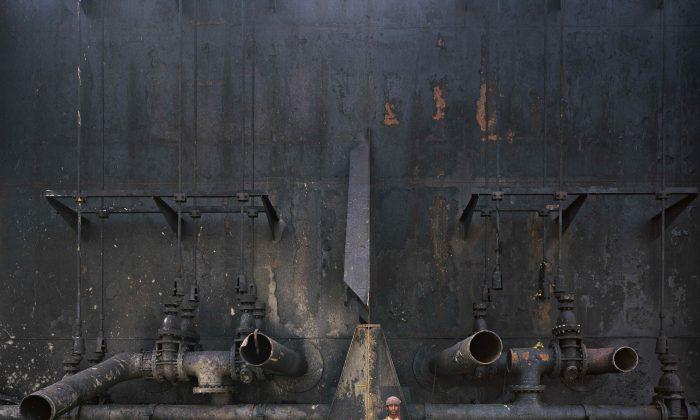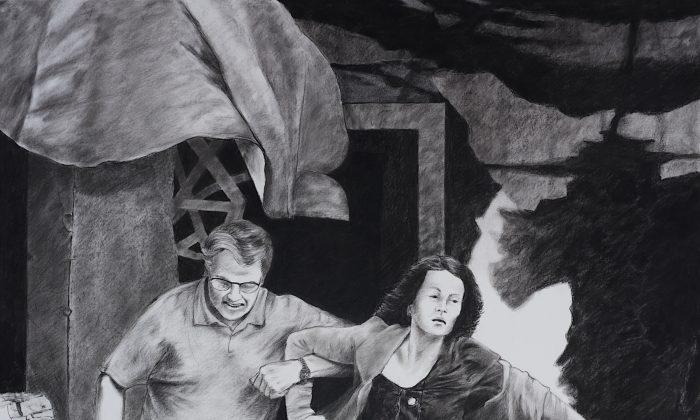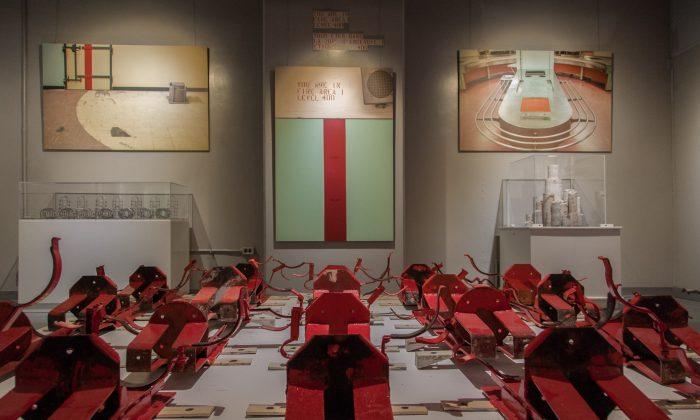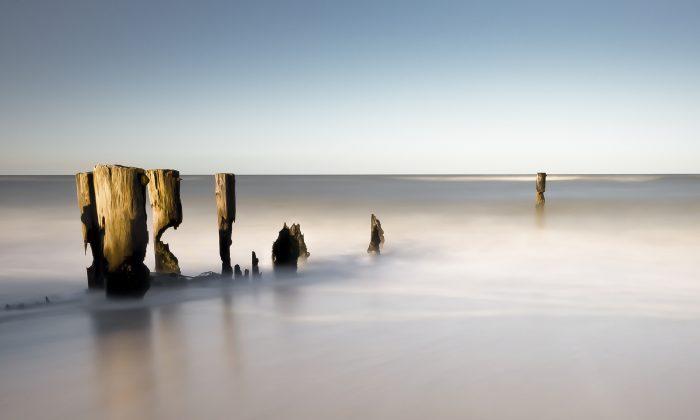Oil, a dramatic exhibition of 56 large-format, digital chromogenic prints by Canadian photographer Edward Burtynsky, has a story to tell.
Entering the exhibition, the visitor sees the first two photographs. Straight ahead on the left is a double photograph, brown as a 19th-century sepia print. Here are oil pumps and pumpjacks as far as the eye can see. The Belridge oil field in California, was photographed in 2003. The print is more than 2m wide.
On the right wall nearest the door hangs a smaller framed print—lush green with a silver calligraphic stroke skip-angled through it. Entitled “Oilfields 22, Cold Lake Production Project, 2001,” the photograph is of a pipeline in the Alberta boreal forest. We see no hint of danger ahead.
Extracting oil from northern Alberta is the world’s largest surface mining operation today.
Edward Burtynsky’s photographs narrating extraction and refinement in the exhibition are of older technologies—fields of pumpjacks and abandoned oil wells—not of today’s oil sands operations and tailing ponds.
There are no whooping cranes with oily underbellies, hydraulic fracturing operations, or toxic spills in any of these photographs. That narrative is provided by the 13-minute video accompanying the exhibition.
In the video, Burtynsky provides commentary to his photographs and argues oil is driving the expansion of the world’s population and the exhaustion of its resources.
The photographs seen in the exhibition itself are, for the most part, narratives of scale, almost always of a heroic scale. All are aerial compositions. Use of an aerial point-of-view enables a photographer to create scenes depicting vast amounts of terrain.
In Oil, the terrain we see is typically acreage patterned by automobiles, airplanes, freeways, motorcycles, oil wells and pumpjacks. The land itself could be Shanghai or South Dakota, Nevada or Azerbaijan.
Through the photographer’s lens, the oil fields of Taft, California, look no different than those of Baku, Azerbaijan.
In 1999, the oil refineries of St. John, New Brunswick, are the same as those of Houston, Texas. So, too are the racing car crews at the Taledaga Speedway in Alabama. Seen from above, all the men are standing in the same straight lines, one no different than any other.
“Shipbreaking 23, Chittagong, Bangladesh, 2000,” however, presents a different scene, one in which a single personality dominates. Centered in the photograph is a young man. He stands alert, regal as any 19th century rajah. In his hands are long metal rods. On either side, cannons appear to be pointing toward us.
The photograph is of a barefoot worker taking apart a derelict ship by hand. Hand labour is feasible when workers’ lives matter less than the scrap metal to be salvaged. In Edward Burtynsky’s photograph, however, we see the young man as a human being.
The last photograph of the exhibition, “Recycling 10, Bangladesh, 2001,” is of six footprints, all of barefoot men working in the sand of the shipyard. So much oil has been spilled into the sand, the footprints are filled with oil.
The Canadian Museum of Nature has included a children’s table in the exhibition hall with several Q&A activities. Children have posted their replies.
Asked, “What do you think the 21st century will be known for?” one child wrote, “There will be no one to remember it.”
Curated by Paul Roth of the Corcoran Gallery of Art in Washington, D.C., Oil was first exhibited at the Corcoran in 2009. The exhibition has been travelling throughout North America and Europe for the last three years. It is currently displayed at the Canadian Museum of Nature in Ottawa, where it runs until Sept. 2.
Edward Burtynsky was born in St. Catharines, Ontario, in 1955. He is a graduate of Ryerson University and Niagara College, and was named an Officer of the Order of Canada in 2007.
Maureen Korp is an independent scholar, curator, and writer who lives in Ottawa. Author of many publications, she has lectured in Asia, Europe, and North America on the histories of art and religions. Email: [email protected]





